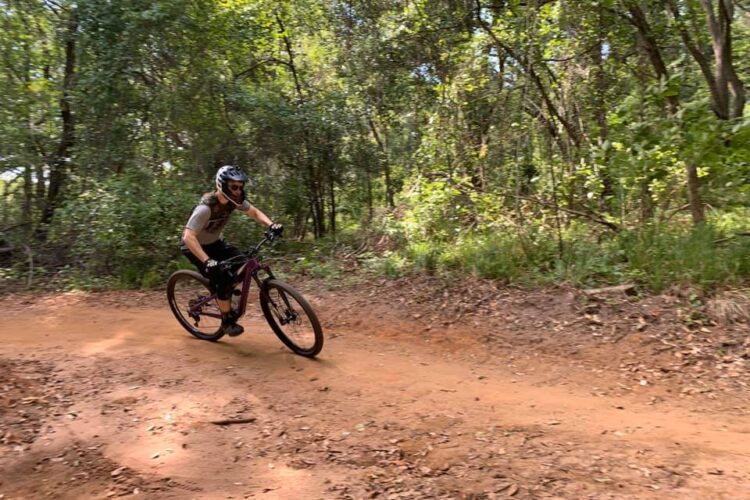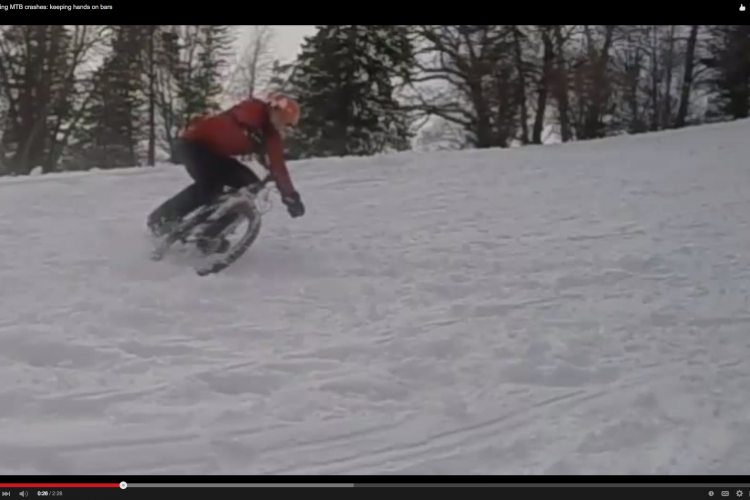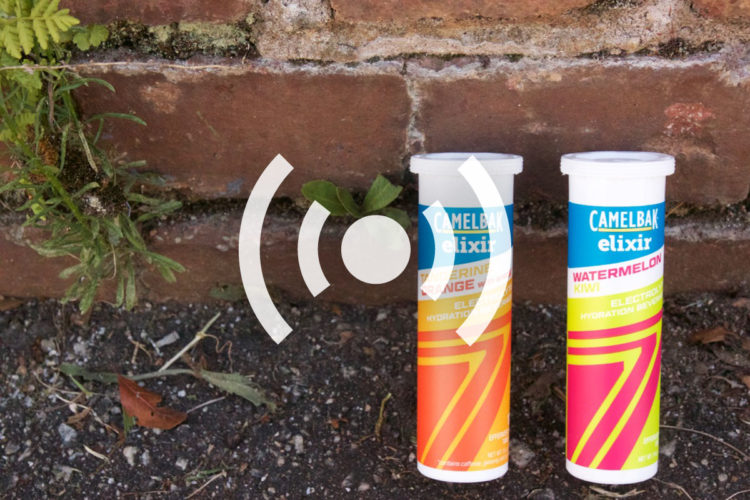
One bright and beautiful September afternoon roughly a decade ago, I was riding with a colleague, having a grand time slaying singletrack and swapping ride stories. At one point, as I recounted a rather spectacular endo, my colleague informed me he had never gone OTB. I found this a little hard to take. After all, I had only been riding about five years and had already done at least that many Superman impressions; he, on the other hand had about two decades more than me in the saddle. Yet, he swore this was the truth. In fact, all his stories were just about great rides; no disasters. Other than the great endo story I was trying to put into words, (to be honest, you kinda had to be there), I did have a couple stories of somewhat greater peril, and as it turns out, more were to come.
They say we (should) learn from our mistakes. I have always preferred to learn from others’ mistakes and not make them myself in the first place. However, it hasn’t always gone that way in my mountain biking past. It is, no doubt, much the same for most riders; few have nothing embarrassing in their riding past. The best most of us can do is share our perils so that others may (hopefully) learn from them. Here’s a brief recount of three bad situations I got myself into.
Bad Trip #1
The Venue: Steamboat Springs, Colorado
Experience Level: 1 Year Riding
The Plan: Ride from Rabbit Ears Pass to Buffalo Pass and back by combining various trails
The Difficulty: LOST!
How it Went Down:
After an 0400 rise-and-shine followed by a three-hour drive from my home in Cheyenne, Wyoming, through a collection of mountain roads toward Steamboat Springs, Colorado, I arrived at the Rabbit Ears Pass trailhead more than a little fatigued. 0400 is very early, and I’m most definitely not a morning person. Add to that a long drive over winding mountain roads, mostly in the dark, and with very heavy eyelids, and I was in no shape to be putting in 40 miles of singletrack riding at 10,000 feet in elevation.

Nevertheless, I made my way out the Continental Divide Trail, eventually hooking up with the Base Camp Trail and lastly the Wyoming Trail, ultimately arriving at Buffalo Pass, about 20 miles afield from my start. The trail was nice, the woods were welcoming, the weather good, route finding easy, and I reached my destination feeling refreshed and quite pleased with myself for executing the journey so efficiently. Knowing I had that far to go back and another three-hour drive home awaiting, I turned around without tarrying too long, and made my way for Rabbit Ears Pass and my awaiting truck.
Not wanting to do a straight out-and-back, I found a trail route that would give me a partial loop, finishing with a lollipop stem to the truck.
Where Things Went Wrong:
I took the alternate route back, but as I approached what I believed to be the intersection with the stem, I noticed not one, but two options. I was rather perplexed. Which one to take? About 30 miles into a 40-mile day, I was faced with a dilemma, and my mind wasn’t as sharp as it was 10 miles previous when I departed Rabbit Ears Pass. As you have certainly deduced by now, I took the wrong fork. It sure looked like it went the right way!
After about an hour of wandering in the woods, I knew I had erred. I had lost a lot of time and was too stubborn to turn back, thinking I could find my way out more efficiently. After all, I could read a map, I had a compass. What a perfect way to put my Eagle Scout training to the test.
But there were two great flaws in that theory.
First, the woods were very dense and there was no way to see through to any landmarks from which to take a compass reading. Second, even when there were openings, they were now obscured by a heavy fog which had rolled in. The skies were thick and grey, constantly misting. Despite being late August, the temperature had dropped to the low 50s, maybe even the 40s, and the dampness of the fog and mist made for perfect conditions for hypothermia. Fortunately, I have a world class internal furnace, and have never been threatened by cold, which came in very handy at this time.

So once I had myself irretrievably lost, I began calling out. Ride a quarter of a mile and holler for any human who might be in the area and know where the h-e-double toothpicks we might be. Ride another quarter mile and try again. And again.
Nobody.
Between looking over my shoulder in the darkening mist for bears, mountain lions, wolves, wolverines, deranged mountain men, Yetis (abominable snowmen, not bikes), Sasquatches, and Orcs, I would pull out the map from time in an utterly futile attempt to relocate my position. Ride, read, holler, fail. The pattern repeated itself ad infinitum. As darkness approached and I actually started to worry, being utterly, hopelessly lost and having long since run out of both food and water, I came around a corner and saw a break in the clouds. Hallelujah! I could see a mountain top. Surely I could figure out what summit it was by comparing terrain to my topo map and thus find a way home!
But I didn’t even need the map. As the mist cleared further, I could see a ski lift ascending the mountain. It was Mt. Werner, the main massif that makes up most of the Steamboat ski area. The good news is I knew exactly where I was, having skied there many times in the winter. The bad news is that I was nowhere near where I wanted to be. Even if I knew how, there wasn’t enough daylight remaining for me to get there. And even that would require I had the energy reserves to make the journey, which I did not.

So I did the only thing I could do. I pointed my trusty old hardtail down the mountain and bombed my way into the town of Steamboat Springs. There was no way I could ride the 3,000 vertical feet back up to my truck at the summit of Rabbit Ears Pass, so, I inquired as to cab service, preferably one with room for a bike. Having left my wallet in my car, I had to beg a convenience store for them to let me use their phone, then beg the cabbie to trust me that there was indeed a wallet at the top of the hill. Cab rides aren’t cheap, especially in mountain towns–but that was the best $50 I ever spent!
Lessons Learned:
- Build up gradually. Don’t jump directly from 12-mile rides in familiar territory to 40-mile rides in unfamiliar backcountry.
- Maintain a fix on your position. If proceeding into unfamiliar territory, make regular stops to ensure you haven’t gone the wrong way. Don’t dive deeper and deeper into the unfamiliar territory, hoping it will get better. “Hope is not a plan!”
- If lost, backtrack to a known location! (I already knew this.)
- Keep your wallet/money/credit cards on you, especially when going back into the bush.
- Overconfidence kills.
- Prepare for the weather! (I also already knew this.)
- If you’re really pushing it, ride with a partner.
Click to page 2 for yet another epicly bad trip!





















11 Comments
Nov 25, 2016
More seriously, I appreciate your lessons learned section. Young riders and less experienced outdoorsmen need to be aware of the importance of preparing for the worst. With most of my riding in Mongolia, there is no cell phone coverage and no professional "resources" to rescue a person, so I almost always go over prepared. There is the possibility of hypothermia year round. I personally have never had a problem, but I have had two persons succumb to the elements and had to care for them -- hypothermia and fatigue due over exertion and cold.
It is very easy to underestimate the dangers of the small mountains that are predominate in Mongolia. On the same day in the summer you could face heat exhaustion and hypothermia. Extra water, extra protein, steri-pen, extra warm layer, map, sat images, compass, first aid kit, matches, lighter, dry paper, Ibuprofen, knife, trail side maintenance .... all are essential. This is a pretty good short list for most places. Also, a loved one should always know where you are going and when you will return at the latest. And you should not deviate from that plan too far, so that you are within a short distance of the known course for S&R to find you more easily. Great write up John.
Nov 25, 2016
Nov 24, 2016
Nov 27, 2016
Nov 28, 2016
Nov 30, 2016
Nov 29, 2016
I really appreciate your support!
I think it's pretty much happening by default with each article I write--just not in order. I'm not sure there's much of a market for "the collected works of the skibum who actually rides more than he skis"! I'm also kind of wondering how things will work out next (see "I Ride Alone"). Chapters still to be written, so to speak.
Nov 27, 2016
Experience Level: 3 years riding
The Plan: Ride the beautiful Sapphire Crest Trail to the Bitterroot River where our camper was waiting
The Problem: Blown-down trees, non-existent trails
It all started early in the morning on a beautiful clear mountain day in the Sapphire's of Montana, which reside right across the valley from the infamous Bitterroot Range. If you know your history, you know that the Bitterroot Range was the geographically obstacle that nearly stopped Lewis and Clark on their march to the Pacific. Anyways, the reviews of this trail around the internet were amazing. One even boosted, "This is the ride that remind you of why you started mountain biking." Naturally, I was very eager to experience this ride, so after me and my father were shuttled to the top of the pass, we immediately started the winding climb up to the main ridge.
At the top of the climb, the day seemed like it couldn't be beat. We were giddy from how easy the climb had been (we had just finished a trail that climbed 4,000 feet in 6 miles a couple days earlier) and the few blown-down trees that we had encountered up to that point didn't seem to phase us. So, with smiling faces and high hopes, we pushed on towards the summit of Dome-Shaped Mountain. Along the way, we were greeted by incredible views and bald eagles. After playing around in a beautiful snow bank (at 8,000 feet, I was astonished that it still existed in July) we summited Dome-Shaped Mountain. This ride was panning out to be the best ride of our lives.
Where Things Went Wrong
After soaking up the views on the summit, we quickly dropped our seats and pointed our bikes downhill. At first, everything seemed fine. Although the trail would occasionally disappear, in the open meadows we were riding through, it was very easy to pick up again. But then we entered what was left of a forest. In 2012 and 2015, forest fires had burned the area and storms had flattened those trees, so much so that the nearby Frank Church-River of No Return Wilderness was declared a disaster area. As we entered, we thought that this burn area would soon give way to unscathed trees, like it had previously on the trail. But as the stacks of trees reached greater heights, some 10 feet high and 100 feet long, we started to wonder when it would end.
After scaling hundreds of these tree stacks at a rate on barely a mile an hour, another problem started to arise. Where before it had been easy to relocate the trail in the meadows, now it was made nearly impossible by the sheer quantity of trails covering the ground. In addition, we were running dangerous low on water, and needed to find some fast. The already nearly impossible task of scaling the barriers of trees was made exponentially harder when combined with the balancing act of carrying a bike along with you. The rhythm of scaling and balancing the tree-barriers was the broken by a very foreign sound. It took me a little while to register what the sound had been. I looked own, and I saw the ground covered in a one inch thick film of murky water. Once my father reached my position, he broke out the filter and we drank.
A couple hours after our drink stop, we were at the bottom of the Dome-Shaped Mountain descent. A section of trail that would of taken us an hour by bike had taken us five. It was five o'clock, and with 15 miles remaining we sat to rest. With no end in sight in regards to the trees, we had to make the worst decision a mountain biker could make, whether to leave our bikes or not. In the end, we decided leaving them was our best option, and reluctantly left them hidden, should we decide to risk life and limb once more to retrieve them.
After another hour, the trees finally let up, and we could walk at a good pace again. We came to a trail junction, and using the map, knew it was a mile to the next trail junction. That was the slowest mile of my life. Once at the trail junction, we knew there was only a mile to our turn off the ridge. Because of quick walking, and some suspension of our disbelief, soon we arrived at the next trail junction. Our map showed our present location 3 miles past our turn. We had been looking for a trail while walking. Our turn no longer existed. Out next option was to hike 2 miles to the next turn off. We decided to put our faith in this, because it would be easy to find due to a step descent immediately before the junction. Once we got there, this junction no longer existed either. We looked and looked, but it was nowhere to be found. Our only option was to bushwhack down the mountain, and with night fast approaching, our mind were populated with the realities that might come out of doing so.
As we started down the mountain, I noticed a faint deer trail. With no better option, we started following that. Soon enough, I identified a cut branch. We had found the trail! Once we started down the trail, our victory was short lived. The threat of darkness had not been hollow, and we were hiking down the mountain in the pitch black night. This trail wasn't a well manicured, switch-backing joy either. It was loose, and went straight down the mountain. Using an IPhone flashlight, we managed to slide down trail, finally making to the dirt road that lead to camp.
After a mile battling severe dehydration (including seeing things), severe foot cramps and soreness, and low spirits, we finally made it to camp at 1:43 AM the next morning. We had just gone through 18 hours of climbing, biking, hiking, and sliding. Without saying a word, I chugged 6 A&W rootbeers, ate a whole party sized bag a Lay's potato chips, and went to bed.
Lessons Learned:
Know when to turn back
Do more research on trail conditions
Make sure you know there is nearby water
Don't underestimate Mother Nature
Bring lots of food and a good topo map
Nov 28, 2016
Nov 27, 2016
But the real outstanding question is . . . . how hard was it to backtrack to, and retrieve your bikes? From the sounds of how far back you left them and how much travel you did after dark, it seems like that may have been an adventure in itself!
Nov 25, 2016